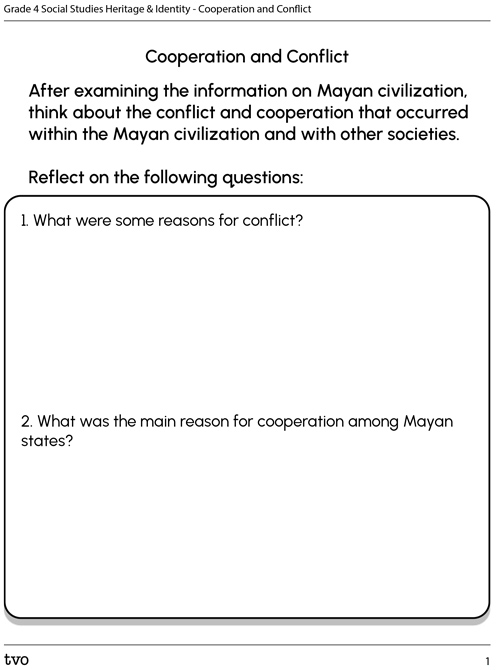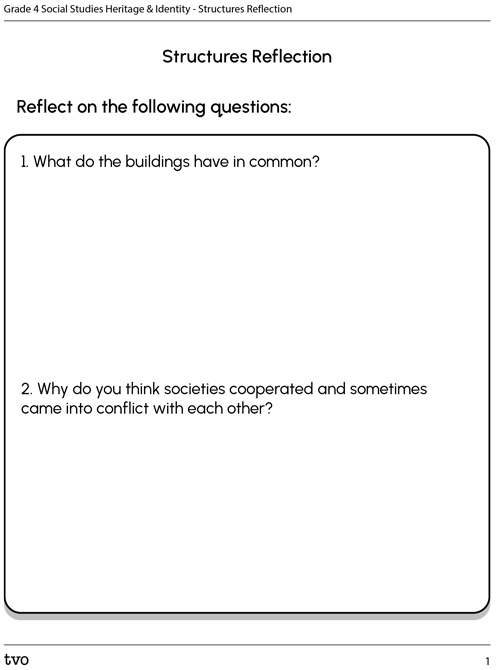Minds On
Cooperation vs. conflict

Brainstorm
What do you think?
Let’s brainstorm ideas of cooperation and conflict.
Consider the following:
- How would you describe cooperation and conflict?
- What are some examples of cooperation and conflict?
- How do you know when people are cooperating?
- How do you know when there is conflict?
While brainstorming, create a mind map illustrating as many possible examples for cooperation and conflict. Consider connections you can make to yourself and the world around you.
Complete the Cooperation and Conflict Mind Map activity in your notebook, in the following fillable and printable document, or in a method of your choice.
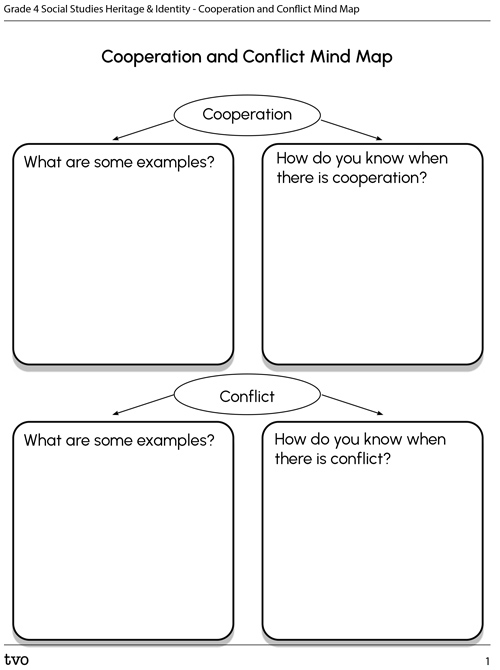
Press the Activity button to access the Cooperation and Conflict Mind Map.
Activity(Opens in a new tab)Action
Conflict

Throughout history, many societies have traded and formed partnerships. However, societies have also frequently found themselves unable to cooperate, which has resulted in conflict.
There are many reasons for conflict.
Press Examples to explore examples of conflict.
As a result, societies have found many ways to protect their citizens. Often, they constructed fortresses, established a military, and engaged in warfare.
Press Let's Check! to explore a hint.
Structures
Let’s explore the following structures that were created to ensure the safety of civilians during times of conflict.
Press the following tabs to access and explore the many different structures that were designed to protect civilians.
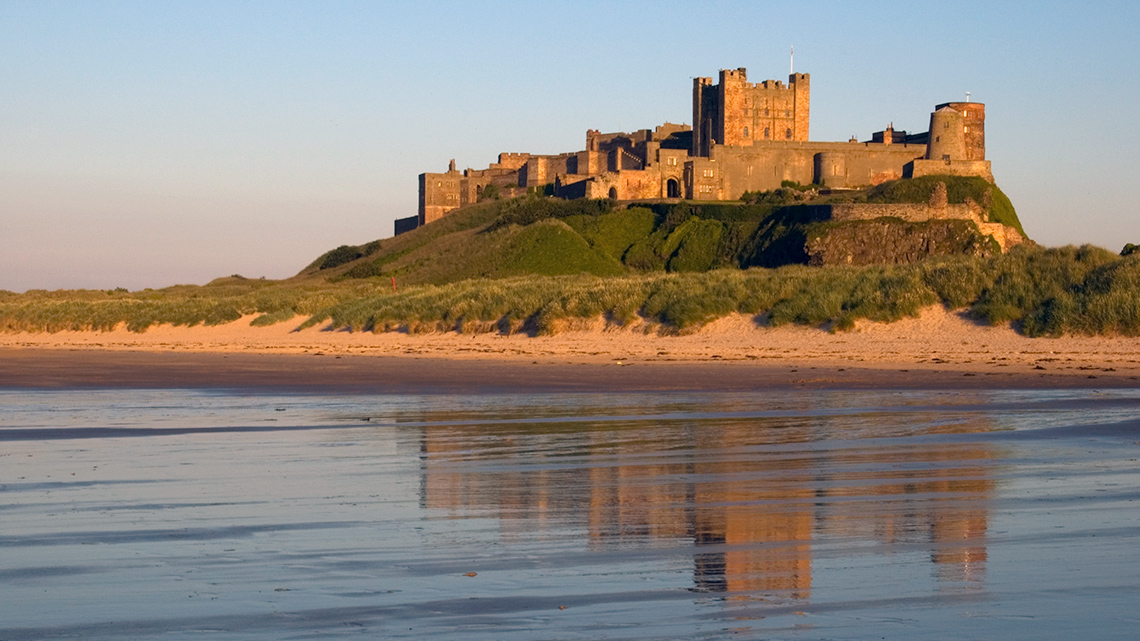

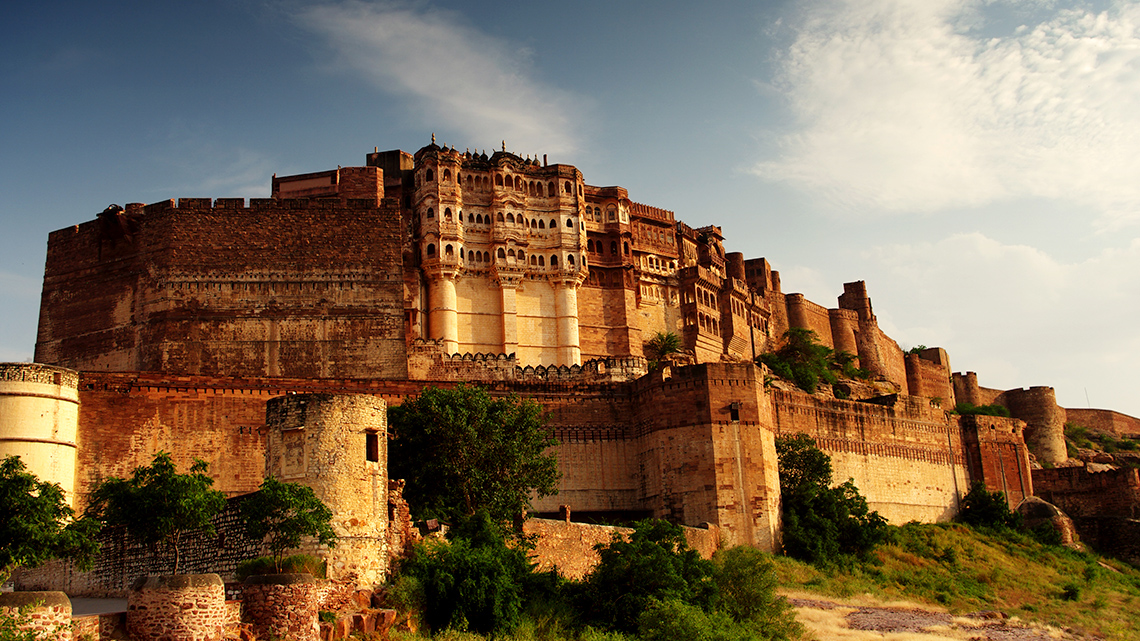
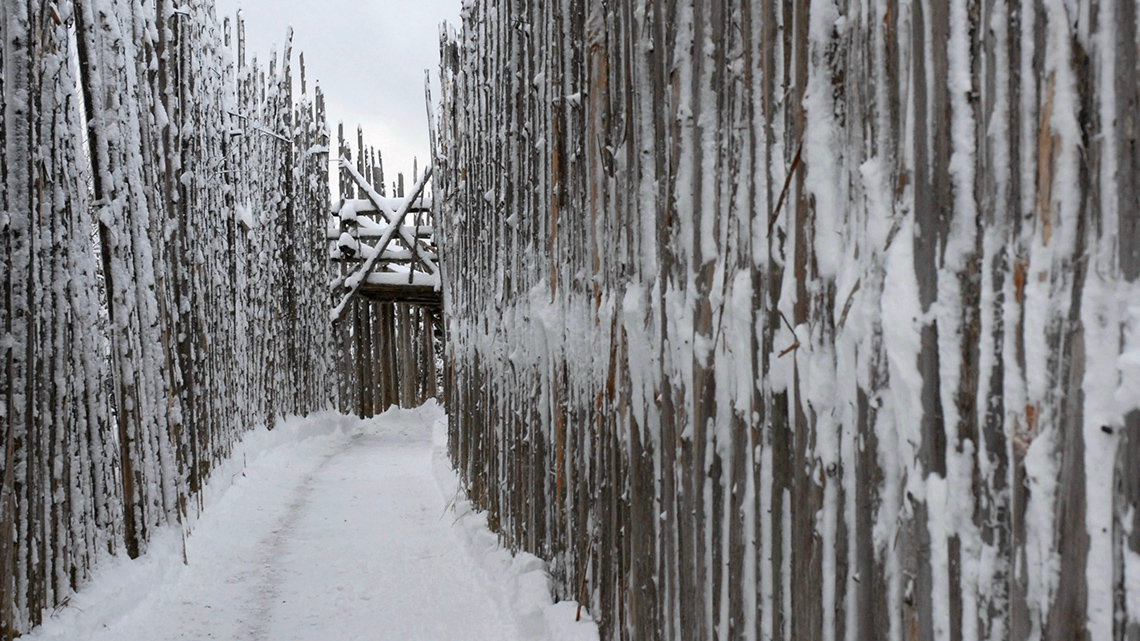


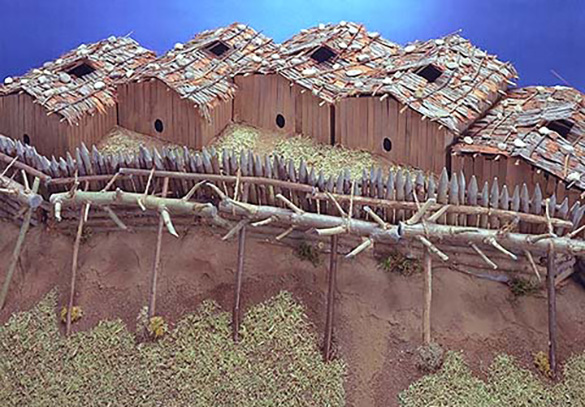
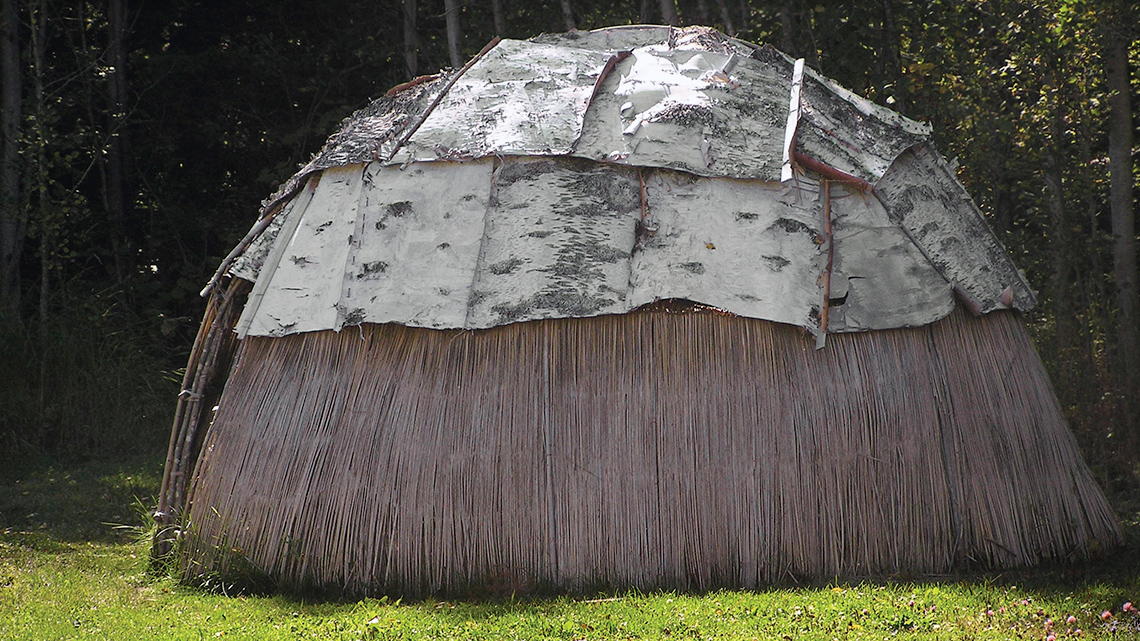
Exploring structures
Choose three of the structures you explored.
As you carefully examine each structure, think about its location, the materials used in its construction, and its design.
Complete the Exploring the Structures activity in your notebook, in the following fillable and printable document, or in a method of your choice.
| Name of Structure & Location | Materials | Design |
|---|---|---|
Brainstorm
Let’s think!
In each of the structures and villages previously explored, describe what it is in the materials or design that provides protection.
Record your ideas in a notebook or a method of your choice.
Think of the strength of materials and the location of the buildings.
Mayan civilization
The Mayan society developed in 300 BCE in modern day southern Mexico, Belize, and Guatemala. They formed a series of city-states, so each city was independent and ran its own economy and military. They were also known for their writing system and written language, architecture, and the invention of chocolate. Their city-states could form alliances, like joining forces with other city-states against a common threat, but this resulted in conflicts with one another from time to time.
As we work towards Truth and Reconciliation, information about lands and territories is constantly being updated. This map was created using information available as of July 2021 from Wikipedia.

Let’s explore!
Press the following tabs to access and explore the different features of Mayan Civilization as they relate to cooperation and conflict.
- The Mayans had multiple trade routes over short, medium, and long distances.
- They often traded with Olmecs, Zapotecs, Aztecs, and those around their society.
- They traded many things, including cacao, salt, seashells, jade, cotton, ceramics, tools, granite, marble, limestone, wood, and obsidian.
La Cuernavilla was known for its incredible defence system in the Mayan civilization.
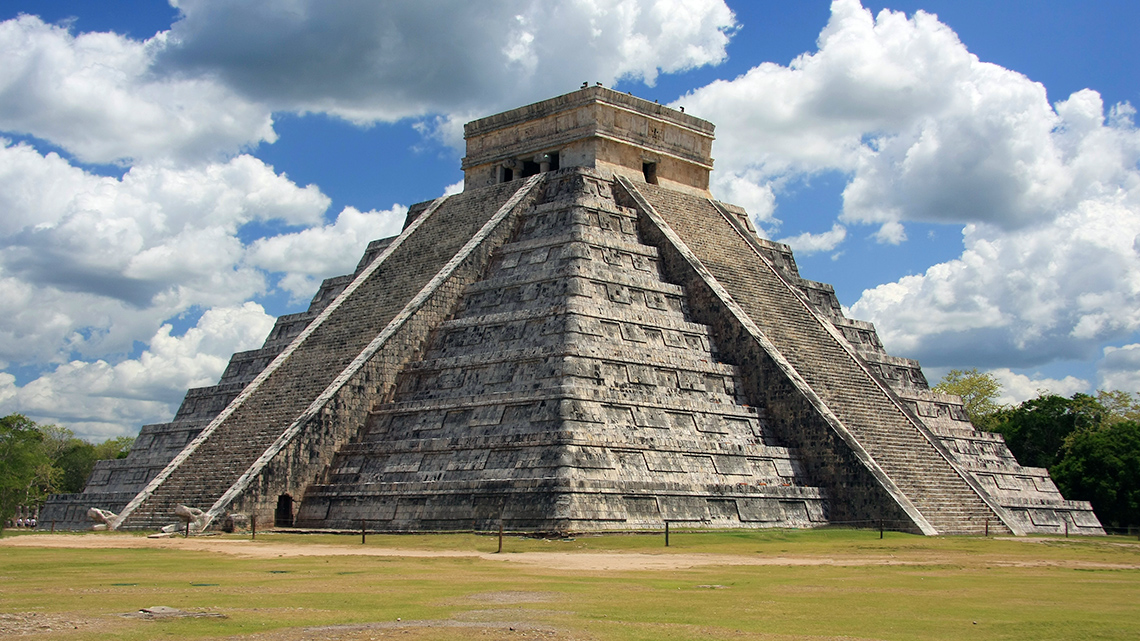
Cooperation and conflict
After examining the information on Mayan civilization, think about the conflict and cooperation that occurred within the Mayan civilization and with other societies.
Consider:
- What were some reasons for conflict?
- What was the main reason for cooperation among Mayan states?
- How was the city designed for protection?
- What materials were used to help protect Mayan citizens?
- How could trade with other societies result in cooperation?
- How could trade with other societies cause conflict?
You may complete the Cooperation and Conflict activity in your notebook, in the following fillable and printable document, or in a method of your choice.
Learning check!
Match the images of protective structures to the society who built them
Brainstorm
What do you think?
Reflect on the following questions:
1. What do the buildings have in common?
Press Let's Check! to access a hint.
2. Why do you think societies cooperated and sometimes came into conflict with each other?
Press Let's Check! to access a hint.
Think about the resources that were in the region and the size of the land.
How might trade impact cooperation or conflict?
Complete the Structures Reflection activity in your notebook, in the following fillable and printable document, or in a method of your choice.
Consolidation
Designing a structure
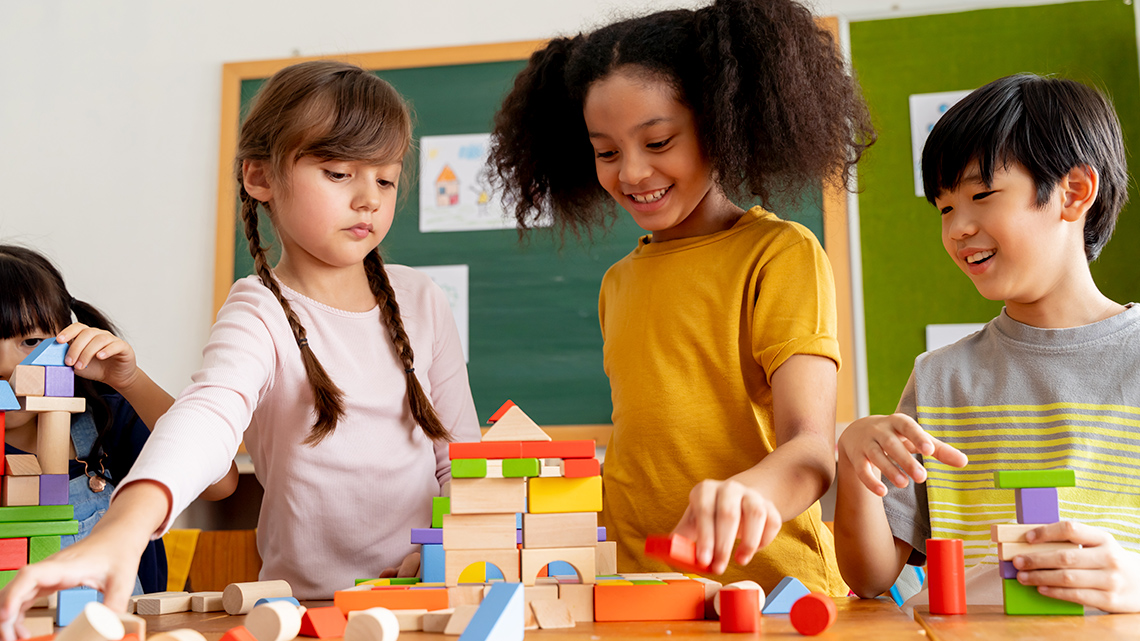
Imagine you are the architect in charge of designing a structure or building meant to provide civilians with housing and protection during times of both peace and conflict.
1. Based on the structures you explored from a variety of societies, design or construct a fortress, temple, castle, wall, or other protective structure that you think would keep conflicts away from your area. This can be a 3D model, a diagram, a detailed description, or another method of your choice.
2. Next, label the features of your structure.
3. Finally, explain why you think it would be effective against conflict with others. Describe how you designed it and the features you included that would have offered protection and safety for those living within.
Record your ideas in a notebook or a method of your choice.
Design Checklist
Use the following checklist to guide you as you complete your design.
I have included:
Reflection
As you read through these descriptions, which sentence best describes how you are feeling about your understanding of this learning activity? Press the button that is beside this sentence.
I feel...
Now, record your ideas using a voice recorder, speech-to-text, or writing tool.
Press ’Discover More’ to extend your skills.
Discover MoreComparisons
1. Select two civilizations from the following list:
- Swahili City-States
- Kingdom of Ayutthaya
- Medieval Japan
- Huron-Wendat
2. Compare how these societies worked cooperatively in times of peace. Focus on trade, alliances, location of the civilization, and any other information that shows how they cooperated.
Record your ideas in a notebook or a method of your choice.

